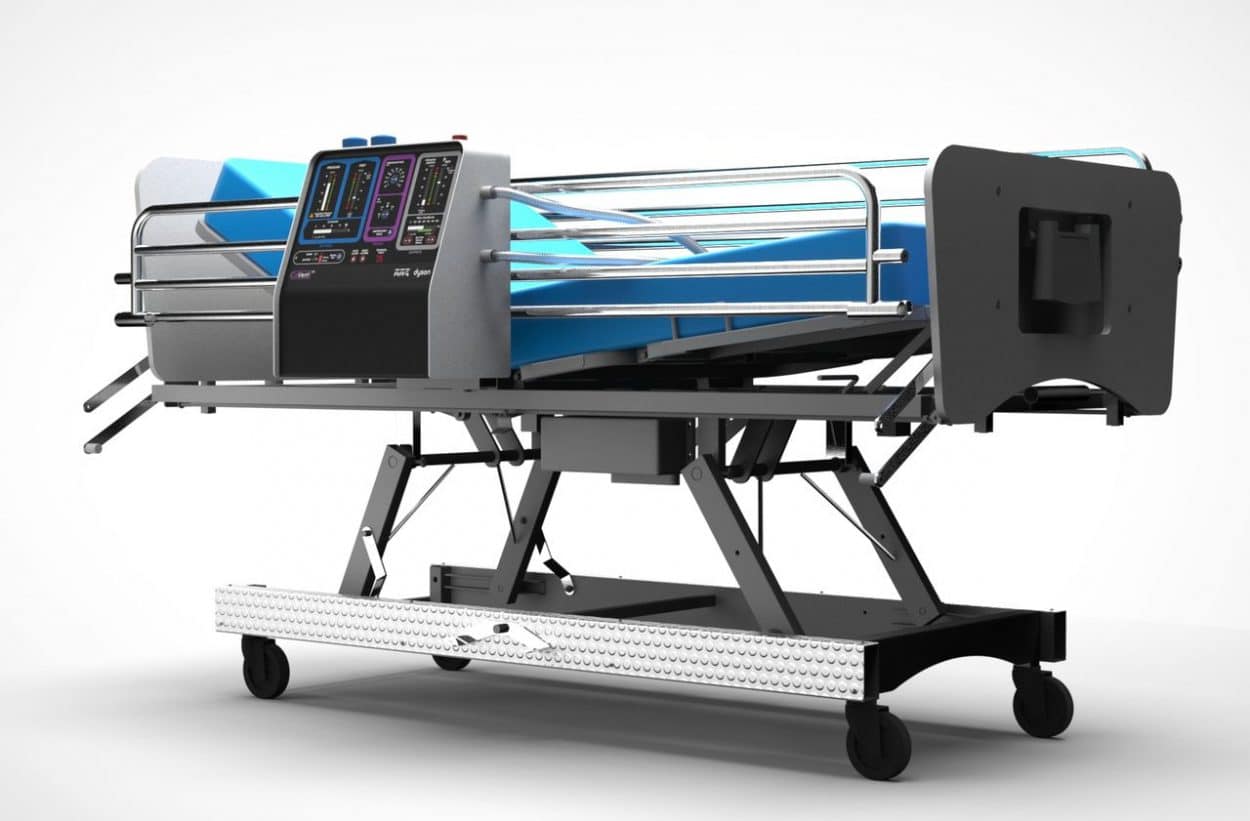As the COVID-19 pandemic continues to spread around the world, the shortage of masks and ventilators has been a major topic for cities and countries that have become the epicenter of the disease. Sir James Dyson, the founder of Dyson Ltd., known for its cordless vacuum cleaners and hairstyling products, recently designed a new type of ventilator in 10 days and is making 15,000 of them to fight the pandemic. In the meantime, a team of experts from the University of Oxford and King’s College London, in the UK, is also racing to build and test a simple yet robust ventilator that can be rapidly deployed.
The CoVent is a newly invented ventilator designed by Sir James Dyson in 10 days, using the company’s existing digital motor that has already been optimized for safety and efficiency and collaborating with The Technology Partnership (TTP) to bring the project to life. The battery-powered machine can be used in different settings such as field hospitals and while transporting patients. The CoVent can run on battery power if needed, as a portable or bed-mounted device. Sir James Dyson explained in an interview with Architectural Digest:
“The device is designed to achieve a high-quality air supply to ensure its safety and effectiveness, drawing on our air purifier expertise which delivers high-quality filtration in high-volume products. The ventilators are slated for availability in early April.”
Areas of crossover include digital motors, battery packs, airflow analysis and high-efficiency particulate air (HEPA) filters. Dyson and TTP will be working with the Medicine and Healthcare Regulatory products Agency and the UK Government to ensure the product and manufacturing process are approved, making the machine a regulated product. The UK Government has already ordered 10,000 units that will be supplied on an “open-book” basis, according to the Belfast Telegraph. The company is donating an additional 5,000 units—1,000 of which are designated to the UK—and is looking to make the machines available internationally.
A Dyson competitor in the UK is also working on ventilators. Gtech, which makes cordless vacuum cleaners and garden power tools, has submitted two examples to the government for assessment. In the US, automakers, including Tesla, Ford and GM, are utilizing their HVAC [Heating, Ventilation and Air Conditioning] manufacturing facilities to produce ventilators to fulfill domestic shortages.
More on automotive brands manufacturing ventilators in an article on DirectIndustry e-magazine here.
OxVent: Simple, Robust and Scalable Ventilator
In the UK, a team of experts from the University of Oxford and King’s College London is also racing to build and test a simple yet robust ventilator that can be rapidly deployed. The group of engineers, anesthetists and surgeons has come together to work on a model that can be produced in just two hours using techniques and tools available in university and small and medium enterprise (SME) workshops.
The OxVent team is responding to UK government’s calls to increase ventilator manufacturing capacity to assist COVID-19 patients and help in the fight against the epidemic, explained Professor Andrew Farmery, Head of Anaesthetics at the Nuffield Department of Clinical Neurosciences in Oxford. He said:
“Ordinarily, the development of such a medical device would take years. But we have designed a simple and robust ventilator, which will serve the specific task of managing the very sickest patients during this crisis.”
The project was initiated by an Engineering PhD student, who is also a medic, said Prof Farmery:
“It cascaded through a core of four people, engineers and anesthetists, and we brainstormed lots of design ideas. We explored many possibilities, but decided the brief was to have a device which was simple, safe and scalable, even if it meant its functions were basic. We needed minimum total parts to facilitate rapid manufacture; minimum moving parts to make it robust and unbreakable, and to mostly use parts already in the National Health Service (NHS) supply chain because standard ventilator component supply chain would be too stressed.”
The OxVent ventilator is made using a standard resuscitation bag and valves already widely used in the NHS. Compressed air squeezes the bag, blowing oxygen into the lungs, with the frequency of breaths controlled by simple electronics. Prof Farmery said:
“It does not have sophisticated high spec like a typical ICU ventilator, but it will plug the gap until such things come online in greater number. In this way it will be a lifesaver, because the alternative is zero. Now we need the government to give us the green light and fund it as soon as possible. They have indicated that they will or may do this, but it requires rounds of testing and approval from the regulatory authority.”
Universities, SMEs and larger industrial partners will be able to make and assemble the ventilators close to their local health services, allowing scaling according to demand and reducing stress on NHS distribution. Prof Farmery explained:
“As soon as we get the green light, we can start manufacture. It is so simple that each device only takes two hours to assemble, so assembly is not rate limiting. Our aim is then to make our plans available on OxVent.org as soon as possible for others across the world to use free of charge.”











